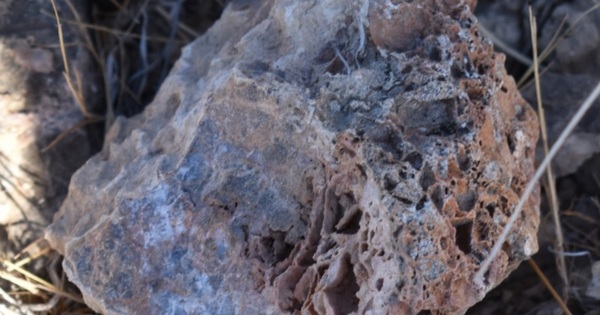Listen to the article
Key Takeaways
Playback Speed
Select a Voice
China’s dominance in fluorspar production, controlling approximately 50% of global output, has raised concerns about supply chain security for this critical mineral essential to industrial manufacturing processes. Industry analysts point to growing vulnerabilities as Western nations become increasingly dependent on Chinese exports while global demand continues to rise.
Fluorspar, also known as fluorite, serves as the primary source of fluorine for commercial applications. The mineral’
Subscribe to Continue Reading
Get unlimited access to all premium content
China’s dominance in fluorspar production, controlling approximately 50% of global output, has raised concerns about supply chain security for this critical mineral essential to industrial manufacturing processes. Industry analysts point to growing vulnerabilities as Western nations become increasingly dependent on Chinese exports while global demand continues to rise.
Fluorspar, also known as fluorite, serves as the primary source of fluorine for commercial applications. The mineral’s significance spans multiple industries, from aluminum production to refrigeration, with particularly vital roles in the manufacturing of hydrofluoric acid and aluminum fluoride.
“The strategic importance of fluorspar cannot be overstated,” says Dr. Elena Martinez, mineral commodities analyst at Global Resources Institute. “It’s classified as a critical mineral by the United States, European Union, and several other nations precisely because disruptions to its supply chain would severely impact manufacturing capabilities across multiple sectors.”
Market analysts note that fluorspar prices have experienced volatility in recent years, driven by China’s export restrictions and environmental regulations that have limited production. The mineral’s current market value ranges between $400-500 per tonne for acid-grade material, with premium grades commanding higher prices in specialized applications.
Mexico stands as the second-largest producer globally, contributing approximately 15% of world supply, followed by Mongolia and South Africa. However, these alternative sources have struggled to meaningfully reduce dependence on Chinese exports, particularly for high-purity acid-grade fluorspar essential for chemical manufacturing.
“We’re seeing increased investment in exploration and development of fluorspar deposits outside China,” explains Robert Chen, commodities strategist at Meridian Mining Consultants. “Companies in Canada, Australia, and parts of Africa are actively pursuing projects, but bringing new production online takes significant time and capital investment.”
The mineral’s critical applications extend across numerous industries. In steel production, metallurgical-grade fluorspar serves as a flux to lower the melting point and remove impurities. The chemical industry depends on acid-grade fluorspar to produce hydrofluoric acid, a precursor to refrigerants, pharmaceuticals, and numerous fluorine-containing compounds.
Climate policies have created additional complexity in the fluorspar market. While environmental regulations have restricted some applications, particularly in refrigerants with high global warming potential, the transition to electric vehicles has increased demand for high-performance materials that rely on fluorine chemistry.
“The shift toward lithium-ion batteries and other clean energy technologies actually increases demand for certain fluorine compounds,” notes Jennifer Williams, sustainability director at CleanTech Materials Association. “This creates a paradoxical situation where environmental priorities simultaneously restrict and drive demand for fluorspar.”
Security concerns have prompted several countries to include fluorspar in strategic mineral stockpiles. The United States added the mineral to its critical minerals list in 2018, while the European Union has designated it as essential to economic security and green technology development.
Industry experts highlight the need for diversified supply chains and increased recycling to mitigate vulnerabilities. While some fluorine compounds can be recovered from industrial processes, current recycling rates remain insufficient to significantly offset primary production requirements.
“We’re seeing promising developments in fluorine recovery technologies,” says Dr. Thomas Bauer, materials scientist at the Institute for Sustainable Resources. “Particularly from spent catalysts and certain manufacturing waste streams, but these processes require further development to reach commercial scale.”
Corporate interest in fluorspar development has increased notably, with junior mining companies securing exploration rights in regions with known deposits. Companies including Canada Fluorspar, Tertiary Minerals, and Kenya Fluorspar have advanced projects aimed at establishing production outside traditional supply centers.
Domestic manufacturing industries particularly affected by fluorspar supply constraints include aluminum producers, chemical manufacturers, and specialized glass makers. The pharmaceutical sector also faces potential impacts, as fluorine-containing compounds represent approximately 20% of all pharmaceuticals currently on the market.
Market analysts predict continued price pressure on fluorspar as demand growth outpaces new supply additions. Forecasts suggest a compound annual growth rate of 4-5% through 2030, driven primarily by chemical applications and emerging technologies.
“The market is signaling the need for new production sources,” says Chen. “Current price levels are beginning to justify investment in previously marginal deposits, but the lead time for developing new mines means we’re likely to see tight supply conditions for several years.”
As governments increasingly recognize the strategic importance of securing critical mineral supply chains, fluorspar may benefit from policy support and investment incentives aimed at reducing import dependencies. However, establishing robust alternative supply sources will require coordinated efforts across industry, government, and research institutions to overcome technical and economic challenges.


